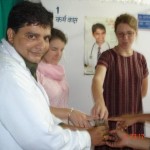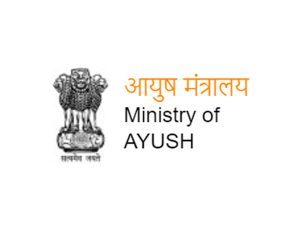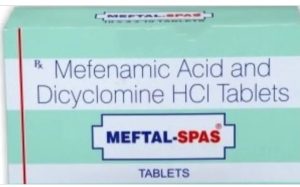Process of oleation :Properties of Ghrita
18 min read
 In Panchakarma procedures administration of Sneh (Oil/Ghee/Fat etc.) is an important treatment for Vata disorders. It is one of the main treatment procedures of Kaya-Chikitsa and is also considered an important pre-operative procedure of Panchakarma. It is undertaken in both external and internal forms- external oleation (Bahya Abhyanga) and internal oleation (Abhyantar Abhyanga).
In Panchakarma procedures administration of Sneh (Oil/Ghee/Fat etc.) is an important treatment for Vata disorders. It is one of the main treatment procedures of Kaya-Chikitsa and is also considered an important pre-operative procedure of Panchakarma. It is undertaken in both external and internal forms- external oleation (Bahya Abhyanga) and internal oleation (Abhyantar Abhyanga).
Snehpana (Adminstration ) of sneh internally by oral route as well as Abhyanga (Massage) must be done prior to doing Vamana and Virechana. However the essential requirement of Abhyanga is that it is exercised prior to d Vasti (Medicated Enema ) and Nasya (Nasal administration of drugs).
In Ayurvedic texts following properties have been mentioned in the drugs used for oleation process- Snigdhata (Unctouness),Guruta (Heaviness), Sheetalta (Cooling/Soothing effect), Mriduta (Softenig effect), Drava (Liquefying effect), Picchilta(Slimeyness), Manda(Sluggishness) and Sookshma (Microfyning or subtyling effect).
The Dravya or drugs used for oleation are classified according to their origin.
1.Ghrit (Ghee) 2.Tail (Oil) 3. Vasa( Fatty acid) 4. Majja(Bone marrow)
- Ghrit/Ghee: In Ayurveda Ghrit/Ghee is considered as an excellent Dravya for oleation process. It is ubiquitous in the Ayurvedic medicinal system and also in the Indian cuisine.
An aromatic substance that is solid at room temperature and melts into a liquid as it warms; Ghee is made by boiling off the milk solids from unsalted Butter, leaving only the golden oil behind. Ghee has a very high flashpoint of 485 degrees F. which makes it one of the best oils to use for cooking. In Ayurveda, Ghee is used as a carrier for the nutrients in herbs and to lubricate the intestinal tract and all the tissues inside the human body. During an Samsodhan (Ayurvedic cleansing ), Ghee is used as the preferred vehicle for oleation-a process of ingesting increasing amounts of oil over a series of mornings. This actually helps pull fat soluble toxins (the stubborn ones – water-soluble toxins usually flush out with our urine) out of the cells and triggers fat metabolism, a process whereby the body begins to burn its own fat as a fuel. Butter, the raw material from which Ghee is made has butyric acid as the primary fatty acid. It is so named because it was first discovered in butter. Butyric acid, also known as butyrate, is a Short Chain Fatty Acid (SCFA) that the intestinal tract thrives on, as it helps to protect the integrity of the gut wall. The process of making Ghee yields an even more concentrated source of butyric acid than Butter.
However, there is another source of butyric acid: the busy beneficial microbes that are present in our gut. Much of the healthy fiber that we eat directly feeds the intricate microbiology in the gut. In turn, the gut bugs convert this ingested fiber to butyric acid which is also the primary ingredient in Ghee. The cells of the colon use butyric acid as their preferred source of energy and their major agent for supporting the health and integrity of the intestinal wall. Research has shown that patients with unhealthy digestive tracts do not produce butyric acid, and have low levels of fatty acids or related oils in the gut. Studies have also shown that adequate production of butyric acid supports the production of killer T cells in the gut, and thus supports the gut-related immunity, which many experts believe delivers up to 80% of the body’s overall immunity. Ghee is one of the highest food sources of butyric acid, it is also packed with a full spectrum of Short Chain Fatty Acids (SCFA), Medium Chain Fatty Acids (MCFA) and Long Chain Fatty Acids (LCFA), both unsaturated and saturated Omega 3 and Omega 9 essential fatty acids, Vitamins A, D, E and K.
Ghee made from organic Butter of pastured Cows is one of the highest natural sources of CLA (Conjugated Linoleic Acid), 9 Phenolic antioxidants, and numerous other minerals.
SCFAs like Butyric acid in Ghee, are used immediately by the body for energy and do not have to be broken down by the bile to be digested and utilized, while MCFA’s require minimal digestion and LCFA’s require much digesting by the liver and gall bladder.
In Ayurvedic texts Ghrit is mainly recommended for the person having Vata and Pitta Prakriti (nature of body) hence also preferably recommended for Vata and Pitta disorders.
Ayurvedic texts mention about the following medicinal properties of Ghrit- It is good for eyesight, longevity,strength,complexion,voice,nourishment,glow,memory,IQ,digestive system as well as senses. Ghrit is considered as a Dravya having remarkable properties to assimilate the properties of other Dravyas without losing its own.
The properties of Ghrit are summarised as below:
* Flushes old bile – which can be re-used by the body up to 17 times.
* Stimulates the liver to make new bile, so 94% of old toxic bile is not re-absorbed.
* Scrubs the intestines of toxins and bad bugs.
*Supports the primary source of energy and immunity for the cells of the gut.
* Supports the health of the beneficial bacteria in the gut which make butyrate.
* Lubricates and softens the hardened tissues of the body.
* Pulls stored fat soluble toxins and molecules of emotion out of the body.
* Encourages fat metabolism and weight loss.
* Supports stable mood and energy levels.
*Protects against bad bacteria in the gut.





